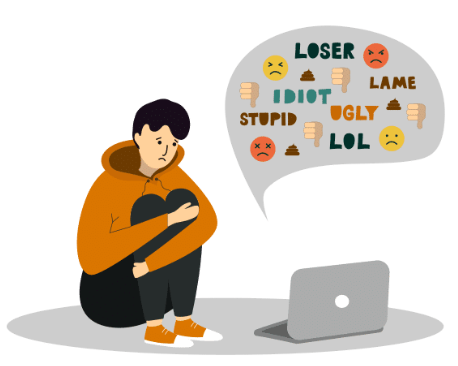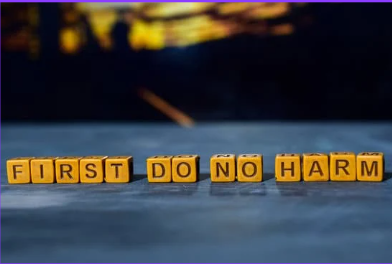13-9, 2 Rio Tower, Persiaran Rio, Bandar Puteri, 47100 Puchong, Selangor, Malaysia.

Understanding Self-Harm in Teenagers: Identifying Risk Factors and Providing Support
Understanding Self-Harm and Its Unspoken Language
Some adolescents turn to self-harm when they face overwhelming emotions, painful memories, or challenging situations. They may resort to self-harm to make their unseen thoughts and feelings more tangible and visible. They attempt to transform their emotional anguish into something more understandable by inflicting physical pain upon themselves. In a chaotic world, self-harm provides a fleeting sense of control and stability.
For some teenagers, self-harm becomes an escape from distressing memories or a way to create peace amidst their lives. Some utilise self-harm as a form of self-punishment for their experiences. It becomes a means to counteract numbness, disconnection, or a loss of identity, allowing them to voice their pain without taking drastic actions (Mind 2020).
Understanding the various Methods of Self-Harm
Self-harm involves a range of actions used to cope with strong emotions.
- Teenagers who self-harm may engage in the following behaviours:
- Cutting or scratching their bodies
- Pulling out their hair
- Burning or hurting themselves
- Hitting parts of their bodies against complex objects
- Engaging in extreme and intense exercise routines
- Other less obvious but profound ways that teens deal with intense emotions include:
- Drinking too much alcohol
- Using drugs or overdosing on medication
- Engaging in unsafe sex
- Binge-eating, purging, and restrictive eating
Understanding these different forms of self-harm is crucial for providing support and help to those struggling.
- Other less obvious but profound ways that teens deal with intense emotions include:

- Digital self-harm occurs when teenagers create fake online profiles and post mean comments about themselves, sometimes receiving hurtful comments from others. It’s a relatively new phenomenon enabled by social media and online platforms.
- Teens create anonymous or fake profiles to distance themselves from their real-life identities.
- They intentionally post derogatory comments to experience the emotional pain of negativity.
- Digital self-harm can be a cry for help or a manifestation of low self-esteem. Identifying can be challenging, as the perpetrator and victim may seem separate.
- Awareness, digital well-being, and a supportive online environment are crucial in addressing digital self-harm. Intervention and support systems should be available for individuals struggling with this behaviour.
Behavioural Signs Emotional Signs Physical Signs – Avoiding activities that expose arms, legs, or chest area
– Consistently wearing clothing that conceals these areas, attempting to hide scars or wounds
– Hiding objects like razor blades, stencil knives, lighters, or matches
– Changes in sleeping or eating patterns
– Loss of interest in previously enjoyed activities
– A decline in school performance
– Spending excessive time alone in isolation
– Displaying impulsive behaviours or engaging in risky activities– Drastic mood swings or emotional instability
– Frequent irritability
Ongoing temper outbursts
– Feelings of sadness, emptiness, hopelessness, worthlessness, or excessive guilt
– Lack of concern for appearance
– Becoming increasingly sensitive to criticism or rejection– Unexplained injuries on the body
– Signs of agitation
– Extreme fatigue or low energy levels
– Wearing long sleeves or pants even in warm weather to cover self-harm marks
– Having multiple scars or wounds in different stages of healing
– Increased sensitivity to touch or discomfort when certain body parts are touched
– Changes in appetite, weight loss, or weight gain
Identifying the Risk Factors of Self-Harm in Teenagers:
According to research by Whitlock and Richardson, approximately 65% of young individuals who engage in self-injury may also experience suicidal thoughts or behaviours at some point. Self-injury is often used to cope with emotional distress or feelings of disconnection. While suicidal thoughts can occur before self-injury, in most cases, they coincide with or follow the initiation of self-injurious behaviours. It is important to note that the majority of individuals who self-injure have not felt suicidal during those episodes.
Teenagers from various backgrounds and circumstances can be vulnerable to self-harm. Certain risk factors that may increase their susceptibility to self-harm include
- Teenagers who are victims of bullying or engage in bullying behaviour.
- Teenagers struggle with low self-esteem and feelings of worthlessness.
- Teenagers diagnosed with other behavioural health disorders.
- Teenagers face challenges in forming and maintaining healthy relationships.
- Teenagers experiencing academic difficulties or learning disabilities.
- LGBTQIA+ teenagers, particularly those who have faced rejection based on their sexual orientation or gender identity.
- Teenagers cope with traumatic experiences such as abuse, loss of a parent, severe physical health conditions, or exposure to violence.
- A family member who has self-harmed or struggled with mental health issues can increase the likelihood of self-harm.
- Teenagers who have not developed adequate coping mechanisms for managing stress and emotions
- Teenagers who feel socially disconnected or experience a lack of support from friends or family members
- Teenagers who have high levels of academic stress (excessive expectations from parents and teachers)
- Teenagers who struggle with body image issues or have a negative perception of their appearance
- Limited access to mental health resources or inadequate support systems
Consequences of Self-Harm
- Self-harm can lead to feelings of shame, sadness, guilt, or loneliness, potentially resulting in further unhealthy choices like substance abuse.
- Teenagers who self-harm are at higher risk of untreated depression, entering into unhealthy relationships, and having suicidal thoughts.
- Self-harm can interfere with teenagers’ academic performance, co and motivation, potentially leading to a decline in school performance or work-related difficulties.
- Self-harm can create a harmful cycle that reinforces dependence on it as a way to cope, making it difficult to break free.
Ways to Support the Teenager from Self-Harm
To effectively support a teenager suspected of self-harming, treating their situation seriously and engaging in meaningful conversations is essential.
- Inquire about their emotions and any challenging experiences they may be facing.
- Foster a non-judgmental atmosphere that encourages them to share openly.
- Listen with empathy and validate their feelings, ensuring they know their emotions are understood and respected.
- If they disclose self-injury, here are steps you can take to assist:
- Encourage the teenager to seek help from a mental health professional who can provide appropriate guidance and support.
- If the teenager expresses thoughts of suicide, it’s crucial to act swiftly to ensure their safety. Contact emergency helplines like Befrienders Kuala Lumpur at 03-76272929 or emergency services such as the Police/Ambulance at 999/112.
- Guide the teenager in discovering alternative ways to handle their emotions. Encourage them to engage in pleasurable activities, like art, music, exercise, or meditation. Suggest journaling as a means of self-expression and confiding in trusted individuals.
Ways For Parents To Support Their Children From Self-Harm
- Initiate open and relaxed conversations: Instead of having a formal talk, try discussing the situation while engaged in an activity or walking together, creating a comfortable environment for your child to open up. Also, avoid bombarding them with questions and focus on understanding their feelings.
- Maintain open communication: Let your child know that they can talk to you anytime they need to. Be patient and reassure them that you are there to listen and support them, even if it takes time for them to feel ready to talk.
- Remain calm and non-judgmental: Listen attentively and show empathy when your child confides in you. Avoid immediately trying to solve their problems and instead focus on understanding their experience.
- Explore the underlying causes: Recognize self-harm is often a coping mechanism for deeper emotional issues. Work together to identify underlying factors such as relationships, experiences, or stressors contributing to their distress. Consider what changes can be made to alleviate these pressures.
- Help them recognise triggers and emotions: Encourage your child to notice when the urge to self-harm arises and the feelings they experience at those times. This awareness can enable them to find alternative ways to express and manage their emotions.
- Engage in enjoyable activities together: Spend quality time doing activities that your child enjoys, even if it’s just for a short while. Engaging in fun and relaxing activities can provide a much-needed break and promote relaxation.
- Encourage healthy habits: Support your child in maintaining a regular routine that includes proper sleep, nutritious meals, exercise, and spending time with loved ones. Also, consider setting limits on screen time as part of their overall well-being.
- Discuss safety measures: If appropriate, talk with your child about removing objects they may use for self-harm. However, consider seeking professional advice if unsure about the best approach.
- Respect their space: While watching your child’s well-being is important, avoid making them feel constantly monitored or policed. Provide them with the necessary space and privacy they need while still checking in and offering support.
- Seek professional help: Remember that professional assistance may be necessary to help your child navigate their self-harm challenges. Don’t hesitate to seek guidance and support from mental health professionals specialising in this area.
Ways For School Teachers To Support Their Students From Self-Harm
- Take prompt action: If you suspect a student is self-harming, act immediately, as early intervention can significantly break the habit.
- Recognise the signs: Stay vigilant for common self-injury indicators such as linear cuts on arms or legs, repetitive picking at scabs, eraser burns, burning with matches or cigarettes, hair-pulling, head banging, or punching walls.
- Trust your instincts: Never ignore suspicious behaviour; trust your gut feeling and follow up on any concerns about a particular student.
- Seek knowledge: Educate yourself about self-harm by learning surprising facts and insights to better understand your student’s behaviour.
- Involve professionals: Allow counsellors, social workers, and administrators to handle the professional aspects. At the same time, you focus on being a consistent and supportive presence for the student.
- Show care and support: Be a compassionate and understanding teacher, willing to listen and provide a safe space for your student to talk or vent. Assure them that there are adults who care about their well-being.
- Foster a safe environment: Create a classroom atmosphere where students feel emotionally, physically, and psychologically safe. Offer support when needed and establish clear boundaries against unkind behaviour.
- Be present: Be a constant source of support for your student, offering an open-door policy and being available to listen, even about non-related topics.
- Give yourself grace: Don’t blame yourself if you miss signs of self-harm. Acknowledge that it is impossible to notice everything all the time.
- Limit access to sharp objects: Be mindful of sharp objects in the classroom and closely monitor their use. Secure supplies when not in use to prevent unintended access.
- Teach healthy coping strategies: Encourage your students to develop healthy ways of dealing with stress. Promote positive influences, teach them how to ask for help, and provide guidance in resolving their problems.
- Review and update school policies: Consider revisiting and revising your school’s policies to ensure they address self-harm adequately. Utilise available resources and seek professional input to develop comprehensive protocols.
Ways For Friends To Support Your Friends/Teenagers From Self-Harm
- Avoid judgment: Refrain from judging or assuming their intentions, which may cause them to withdraw further.
- Bring up the topic: If you notice signs of self-harm, kindly address it with your friend, expressing concern and offering to talk to and support them.
- Seek understanding: Show genuine interest in understanding their reasons for self-harming, including the type and frequency of injuries, any coexisting mental health issues, their willingness to seek help, and their risk for suicide.
- Offer to listen: Let your friend know you are available to listen without judgment or the need to provide solutions or advice.
- Be supportive: Offer support and assure them that you will be there for them, even if you don’t fully comprehend their actions.
- Don’t dismiss: Avoid dismissing or ridiculing their self-harming actions, as it can be distressing for them.
- Don’t ask for promises: Refrain from asking them to promise to stop self-harming, as it may increase their distress and make them feel powerless.
- Be accepting and normalise: Encourage them to seek help while acknowledging their feelings and coping mechanisms. Help them understand that self-harm is ineffective and offer assistance in finding professional services.
- Involve a trusted adult: Encourage your friend to seek help from a trusted adult or offer to accompany them. If they are not ready, consider speaking with an adult yourself to ensure appropriate support for you.
- Be a friend: While supportive, engage in activities that both enjoy maintaining a balanced friendship beyond self-harm discussions.
- Take care of yourself: Ensure you take care of your well-being and seek support from a trusted adult if needed.
- Give it time: Understand that your friend may not immediately be open to seeking help, so be patient and continue to be a caring presence.
About SKYBI
Discover a safe and supportive counselling platform where our team of caring professionals specialises in helping people with various mental health concerns, including self-harm in teenagers. We offer a range of effective therapies and approaches to create a nurturing environment for young individuals to start their healing journey. Our services focus on all aspects of mental well-being, considering each person’s unique needs. You don’t have to face these challenges alone – contact us today at 011- 1984 4028, enquiry@myskybi.com, or visit our website https://myskybi.com/ to learn more about how we can support you. Together, we can navigate this difficult path and help you regain control over your mental and emotional well-being.








